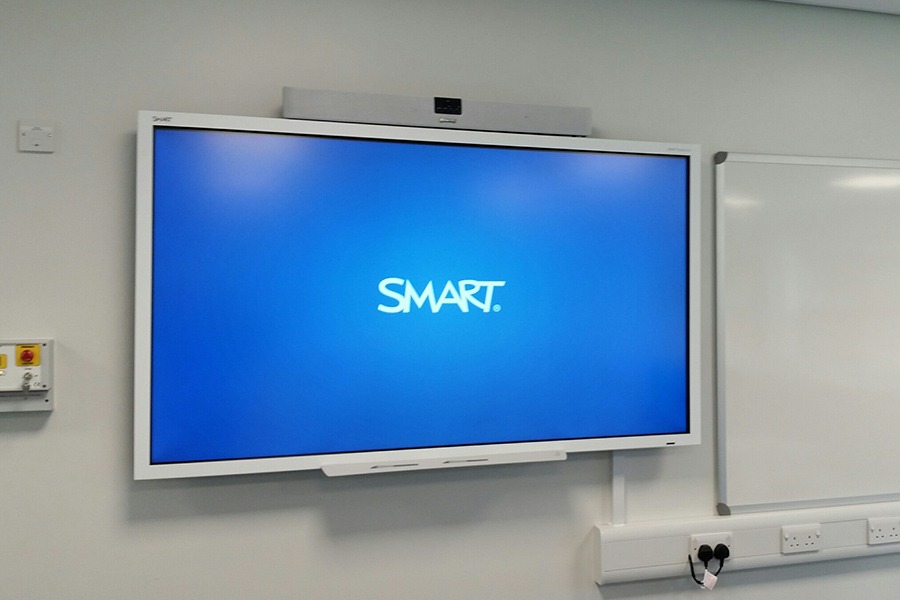AV technology is changing classrooms. Interactive screens and data projectors make learning more hands-on and interactive. Using technology gets students more excited to learn, and it also helps them do better in school. The cool new tools make lessons fun and help kids learn more efficiently.
For example, computer simulations help make tricky, unseen ideas easier to understand. Fun educational videos use graphics and sound to simplify normally confusing stuff. Tools like these grab students’ attention, so they participate more in the lessons.
Apps and online quizzes make learning more fun by adding game-like features. The variety of activities keeps students engaged, so they stay focused and want to learn.
AV Technologies for Schools
Start with easy-to-use interactive products like touchscreens or projectors when creating an AV setup. Pair them with projection surfaces like pull-down screens that everyone can see. Don’t forget quality audio that fills the room so everyone can hear clearly. Connect it all seamlessly with wiring and terminations. Wall plates near the presenter allow for convenient plug-ins and switching between devices.
The goal is simple and intuitive technology. Interactive touchscreens empower engaging, hands-on presentations. Projectors and screens make visuals visible for the whole class. Full-room audio ensures information is conveyed correctly. Streamlined connections behind the scenes facilitate flawless transitions between lesson components. Well-placed controls give teachers command of the system right at their fingertips.
Combining these thoughtful AV solutions results in vibrant, effective learning where technology enables—but never restricts—captivating instruction.
Nurturing Collaboration and Communication
Web conferencing platforms and virtual exchange programs are changing how students collaborate across different schools and countries. These online tools create shared workspaces where students can collaborate on projects, developing essential skills like cooperation, seeing different perspectives, and communicating effectively.
Classroom AV systems are also proving decisive in helping students think more flexibly. These platforms let students engage in thoughtful debates, exploring various viewpoints, while teachers facilitate respectful discussion.
Continuous Assessment for Improved Outcomes
Assessments provide feedback to gauge the efficacy of teaching practices. AV technology enables creative assessment formats, like online quizzes, games, and immersive scenarios. Instant feedback guides educators to strengthen problematic areas.
Analytics from software track individual student progress, allowing teachers to personalise remedial or advanced instruction per needs and abilities. Continuous monitoring and refinement of teaching methods based on assessment data are instrumental for improved learning outcomes.
Summing Up
AV integration facilitates multidimensional learning that is stimulating, enjoyable, collaborative, personalised, and inclusive. Immersive and interactive multimedia experiences boost student motivation and engagement. Assessments provide insights to constantly improve instructional methods and content.
Overall, embedding AV technology thoughtfully strengthens the culture of learning and instructional quality. Schools must invest time and resources in teacher-training programs that build AV proficiency. A sustained focus on maximising AV technology can enormously enrich learning processes and outcomes.



